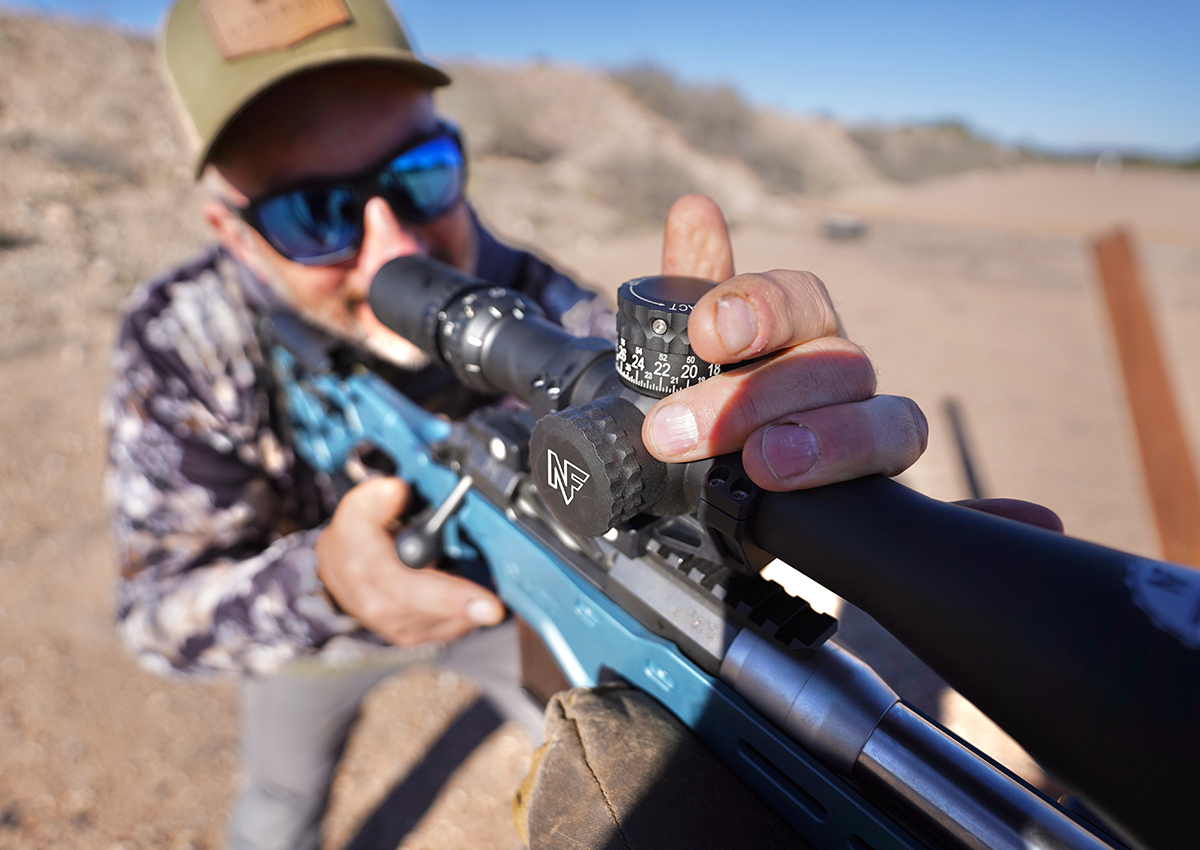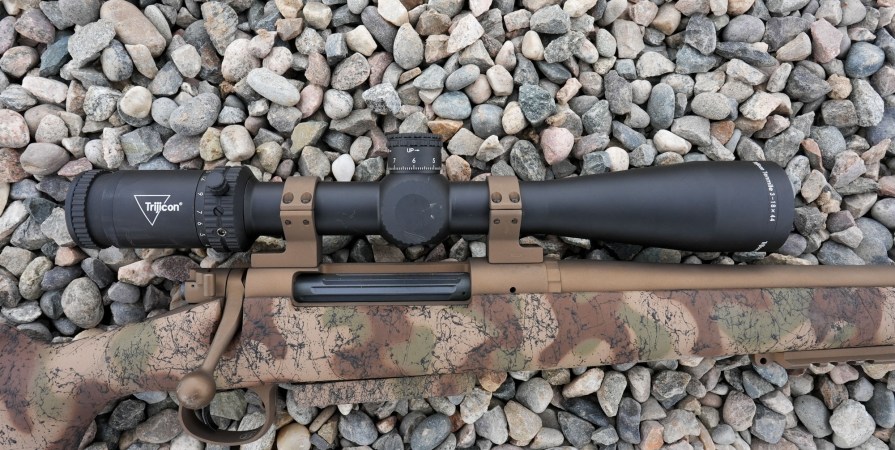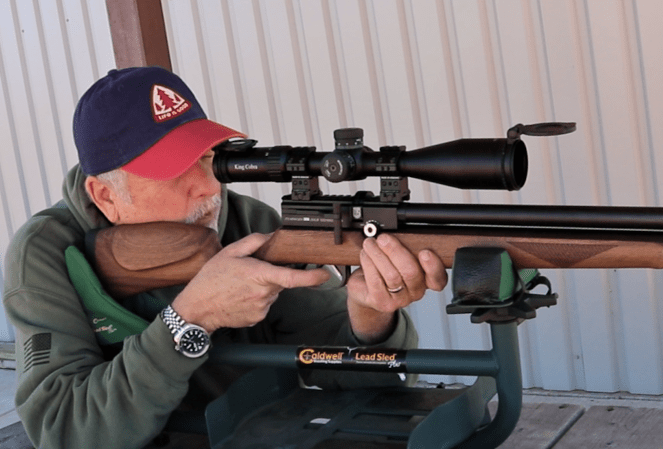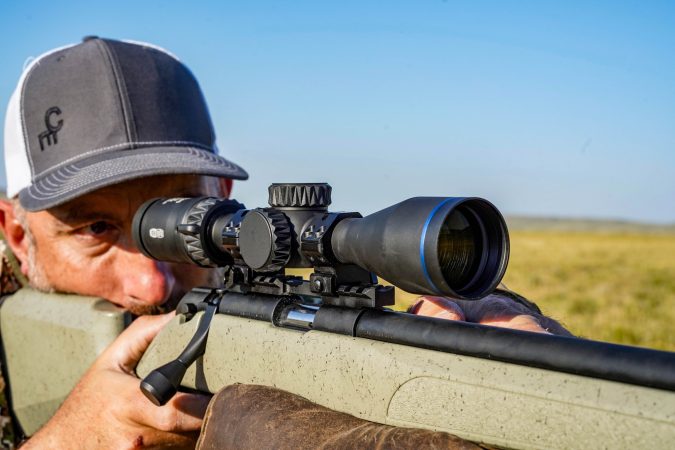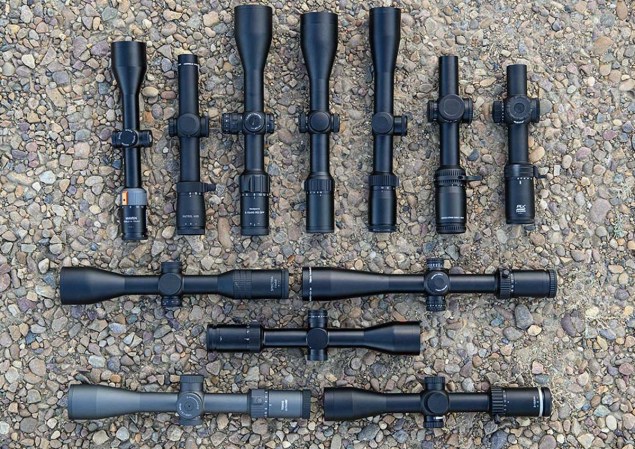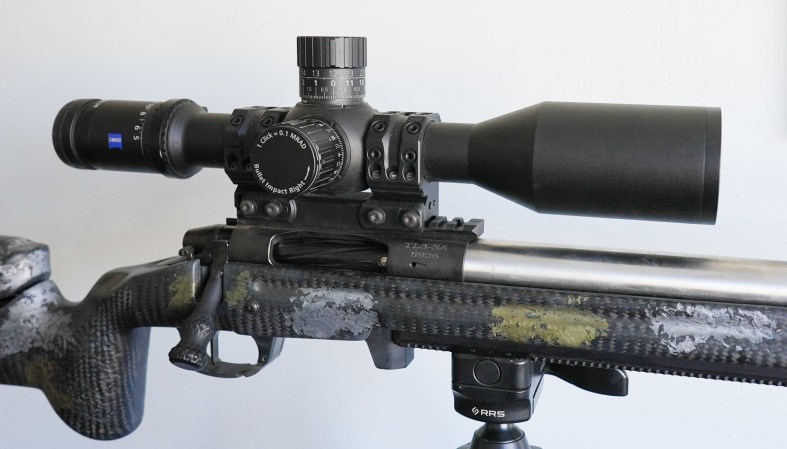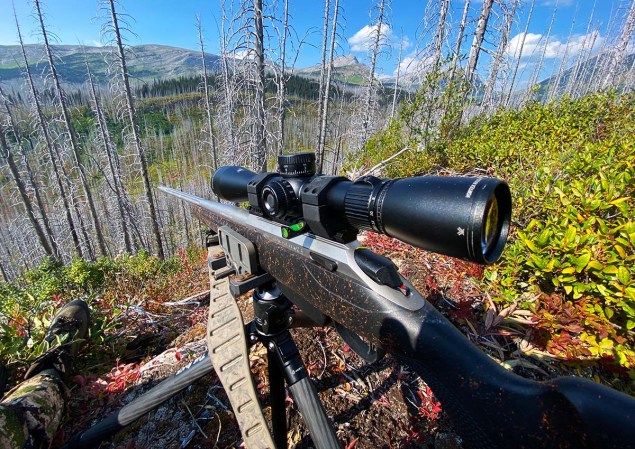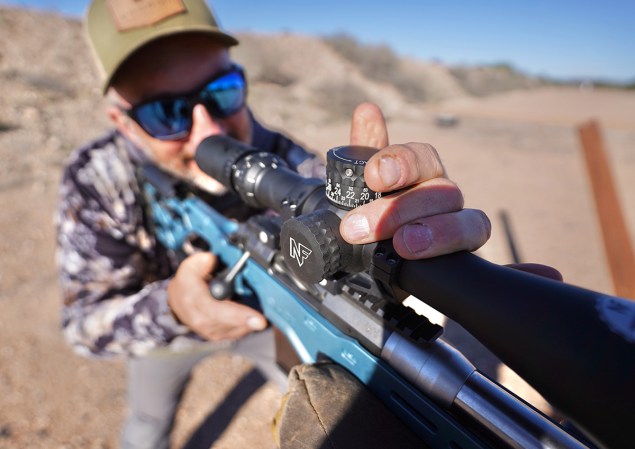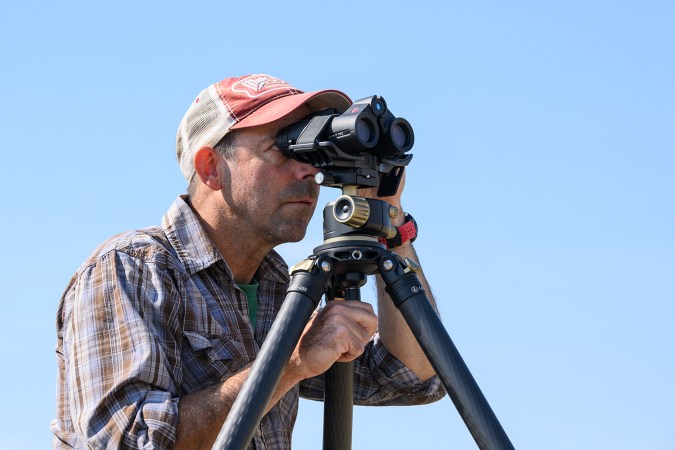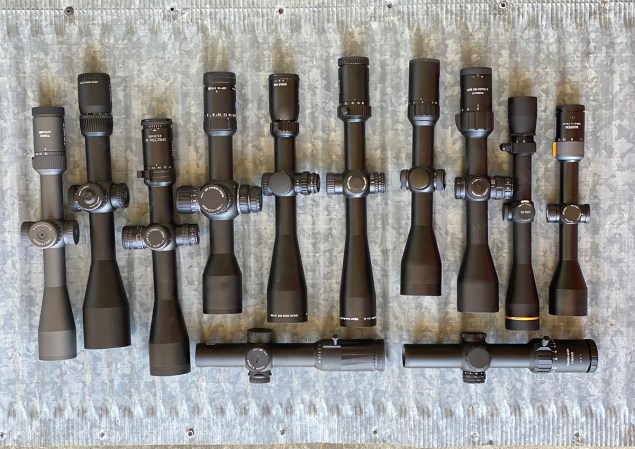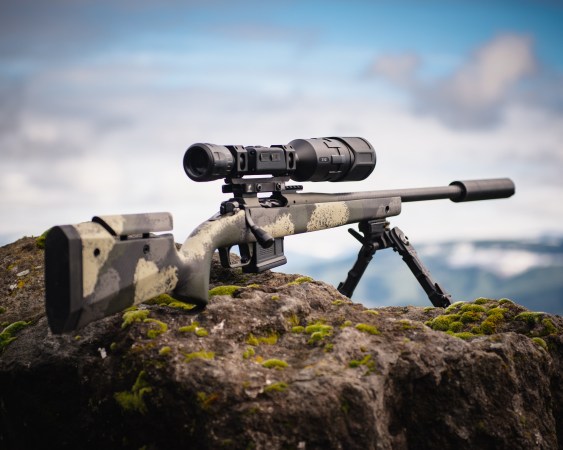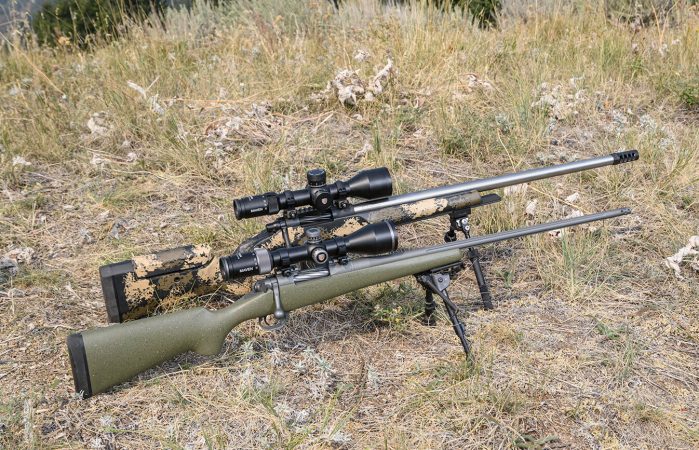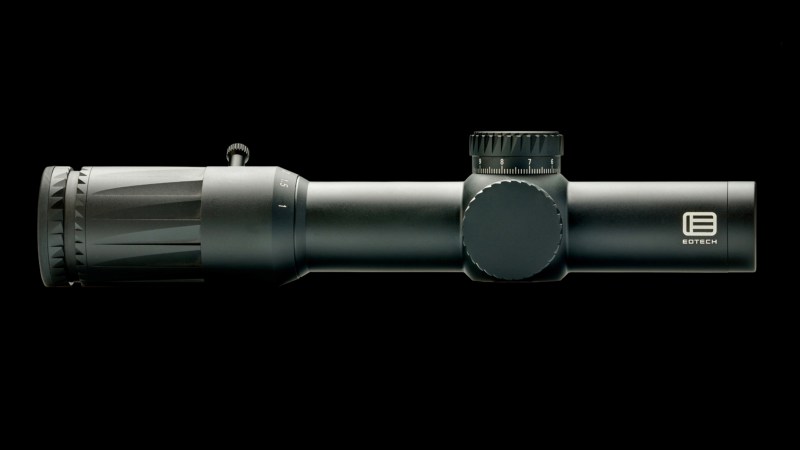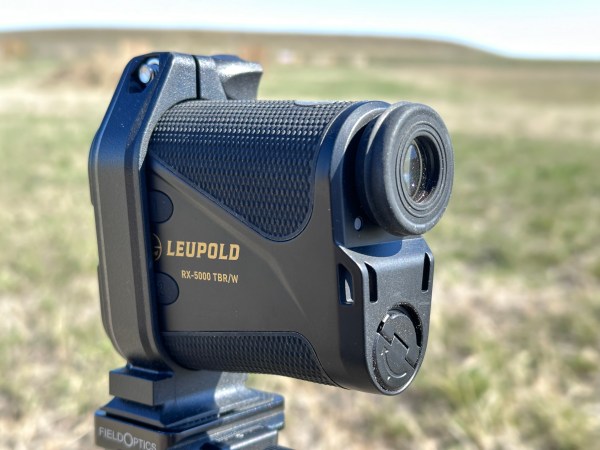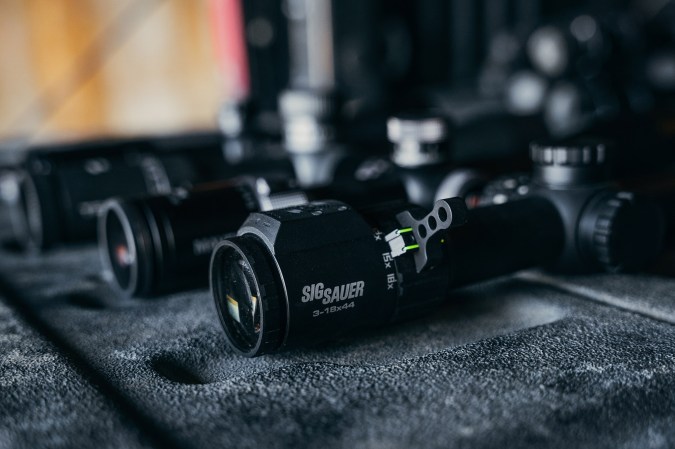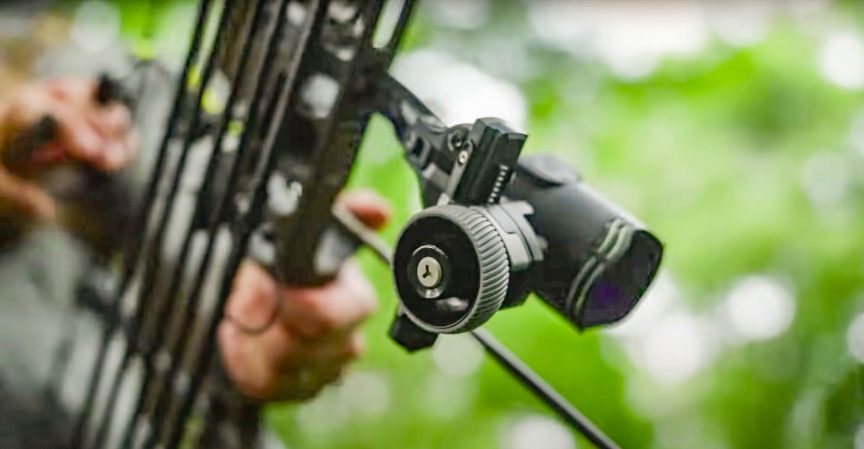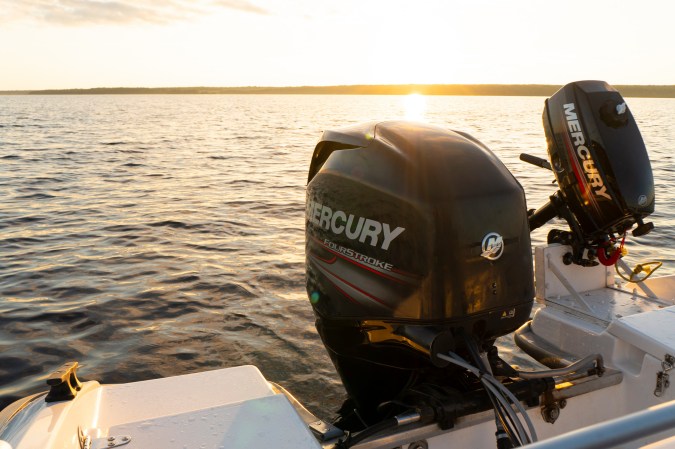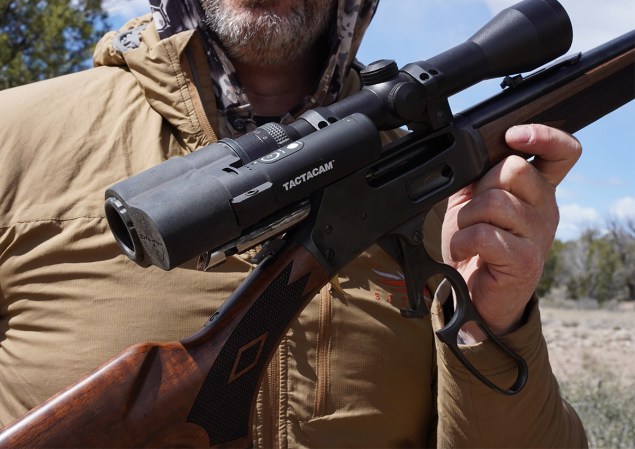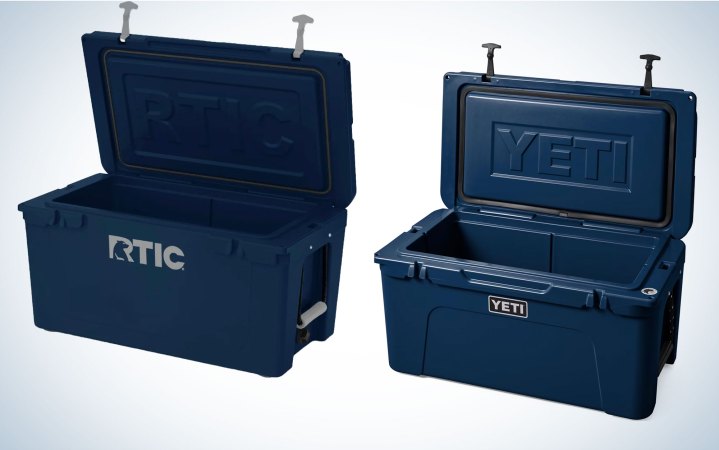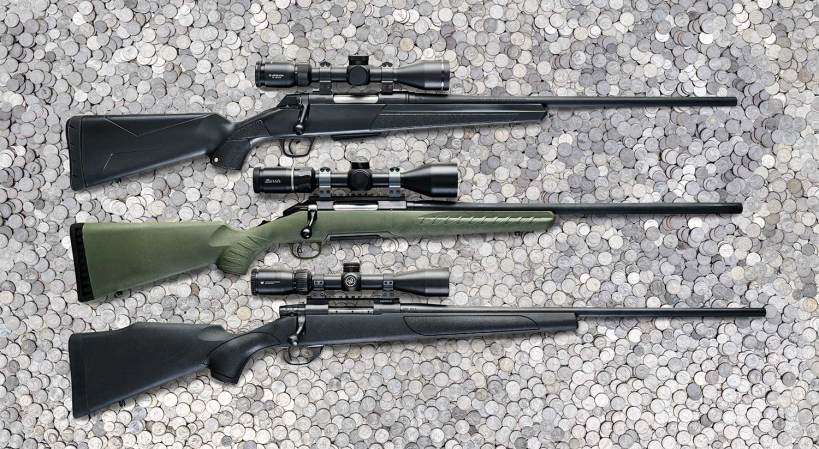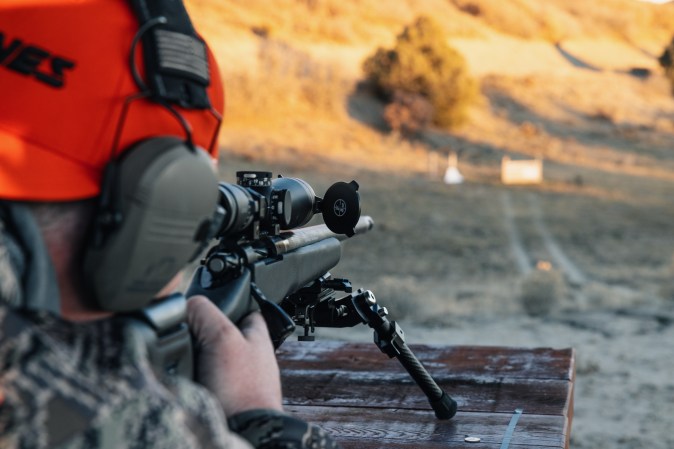We may earn revenue from the products available on this page and participate in affiliate programs. Learn More ›
If you’re shopping for a rifle scope, the third question—after “What do you plan to use it for?” and “How much are you looking to spend?”—is “Are you looking for a first-plane or second-plane reticle?” The first two questions are pretty easy for most shooters and hunters to answer. That third question generally leads to a long pause. What’s the difference between FFP vs SFP again?
Smart shoppers will ask the retail clerk to explain the difference, but a surprising number of rifle shooters, afraid to ask, end up mumbling some unhelpful guess.
The clerk, trying to be educational, might say something like: “Well, second-plane reticles are more for hunting, and first-plane scopes are more for target shooting.”
The result of all this guessing and speculation and half-correction is that many scope buyers leave with an optic that’s not quite right for their needs. They also likely have no better idea of the difference between first focal plane and second focal plane than when they walked in the door.
You may well be in that population, unsure of the acronyms SFP or FFP on online descriptions, and armed with only a flimsy idea of their optimal uses. So here it is, the difference between second-plane and first-plane reticles, sometimes called rear-plane and front-plane reticles, respectively.
Put simply: The reticle in a first-plane scope will increase and decrease in size as you change magnification. Because of that feature, your trajectory markings—those hold-over and hold-off references on the reticle—will remain the same relative to each other and to the image size regardless of magnification. In a second-plane scope, reticles stay the same size, regardless of magnification. That’s a handy feature if you have a simple crosshair.
Still not clear on which option is best for your needs? Let’s get into the weeds.
What Is a Reticle?
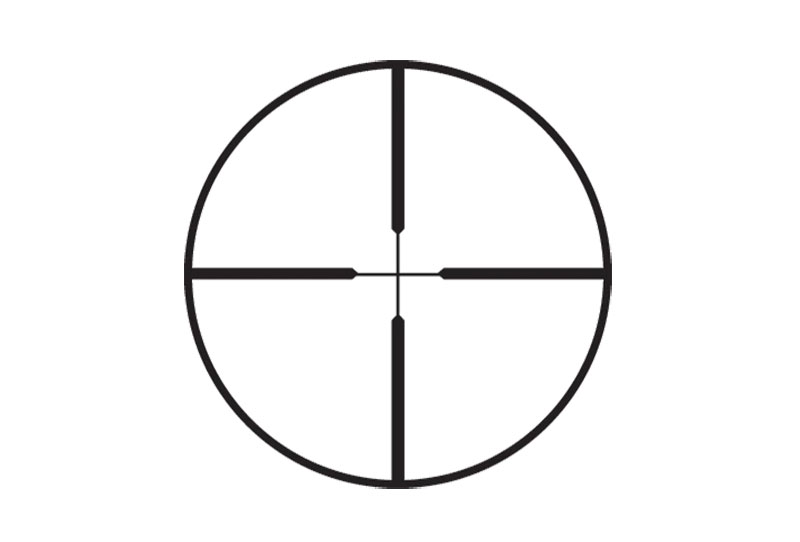
Before we get into detail about how these two styles of reticles work and why they are called what they’re called, we’re going to take this discussion right down to the studs. What is a reticle, anyway? It’s the aiming points of a riflescope.
In some models, the reticle is a cross created by a horizontal and vertical line that bisect at right angles. Hence the old term “crosshairs.” Other models might have additional bars on the vertical axis below the cross. These are called BDC, for bullet-drop compensating reticles. And still others might have all sorts of hashes, dots, and lines along the horizontal line and all the way down the vertical line, and even out in the open areas below the center aiming point. These are generally called precision reticles.
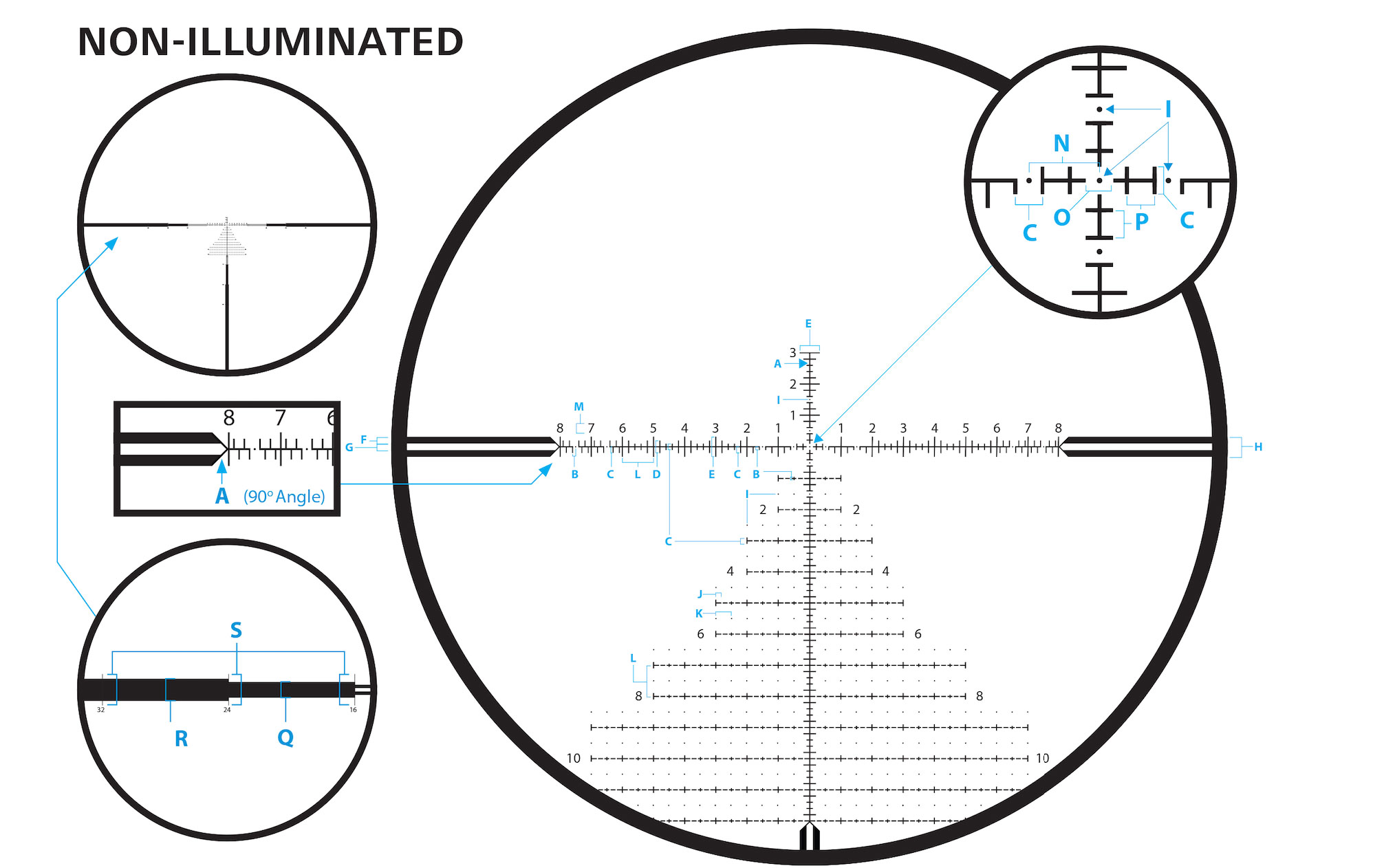
The marks along the horizontal axis are used for “holding off” or adjusting your shot to compensate for wind coming from either left or right. The stronger the wind blowing your bullet off plumb, the more you’ll need to hold into the direction of the wind to compensate for the drift to place your bullet in the bullseye.
The marks along the vertical axis are “hold-over” marks for adjusting your shot to distance. The farther your target, the more you’ll need to hold over your target in order to combat the twin forces of gravity and decreasing velocity of your bullet.
Read Next: Best Rifle Scopes
Anatomy of a Scope
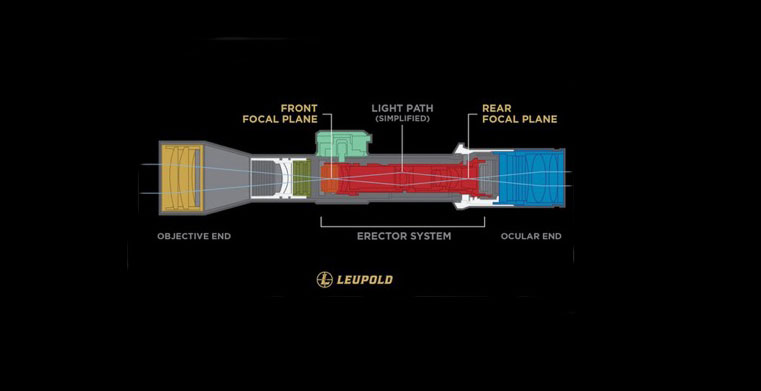
Next, let’s talk about the anatomy of a riflescope. The lens closest to your target, the big lens at the end of the scope, is the objective lens. The smaller lens closest to your eye—the one you look through when you aim—is the ocular lens. Just in front of the ocular lens is a twistable ring that adjusts magnification. Most modern riflescopes are variable-power scopes, meaning you can adjust the magnification by turning that ring, aka the “power-changing ring.”
In the middle of the scope are a couple of control knobs, often protected by screw-off caps. The knob on top is the elevation turret. Turn it to move the reticle either up or down, depending on the distance to your target. The knob on the right side is the windage turret. Turn it to move the reticle either right or left. Together, those two knobs become the scope’s “erector system.” They move a hidden tube inside your scope’s outer tube up, down, left, or right, to adjust where you want your bullet to hit.
Reticles can be placed on either the first or second plane, which describes where the reticle is located relative to that mid-scope erector system.
A first-plane reticle is in front of the erector system. Because of that, the reticle will increase in size with the magnification, and decrease in size as the magnification decreases. A second-plane reticle is located at the rear of the erector tube, close to your eye. Because of its location behind the magnification lens, it stays the same size regardless of magnification.
So what does this mean in the real world? And how does this help you pick the right scope for your specific shooting requirements?
First-Plane Reticle Breakdown
Pros
Remember, a first-plane reticle will increase and decrease in size with image magnification. This means your trajectory markings (the hold-over and hold-off references on the reticle) will remain the same relative to each other and to the image size regardless of magnification. This is great news if you hate doing math, and intend to use your scope at a lot of different magnifications.
Here’s an example. Say you have a first-plane scope with 1-mil hash holdover marks down the vertical stadia. Your specific target requires you to hold 2 mils high in order to hit, but you need to dial your magnification down in order to get a wider field of view. That 2 mil hold will be the same whether your magnification is at 6-power or at 30-power. That’s because all the reticle references remain proportionate to each other regardless of magnification.
The power of first-plane reticles really shines in precision target competitions, especially when targets are placed at unknown distances, or in the military equivalent: sniper work. In these dynamic shooting situations, shooters may have to change magnification and make instantaneous aiming decisions in order to engage targets at unknown distances or in very brief windows. Having an unchangeable reticle, regardless of magnification, reduces the number of variables precision shooters have to consider. Most precision reticles have abundant references—hold-over and hold-off marks—which maintain their relationship regardless of magnification.
Read Next: MIL vs MOA
Cons
There is a downside, though. Because the reticle increases in size with magnification, it can get obnoxiously large at the highest powers, so large that the reticle can obscure smaller or distant targets. That’s especially troublesome in FFP reticles that don’t have an open center aiming point. And at lower magnifications, especially in a class of short-range scopes called Low Power Variable Optics, the reticle’s precise aiming points can almost vanish because they grow so small at 1- and 2-power.
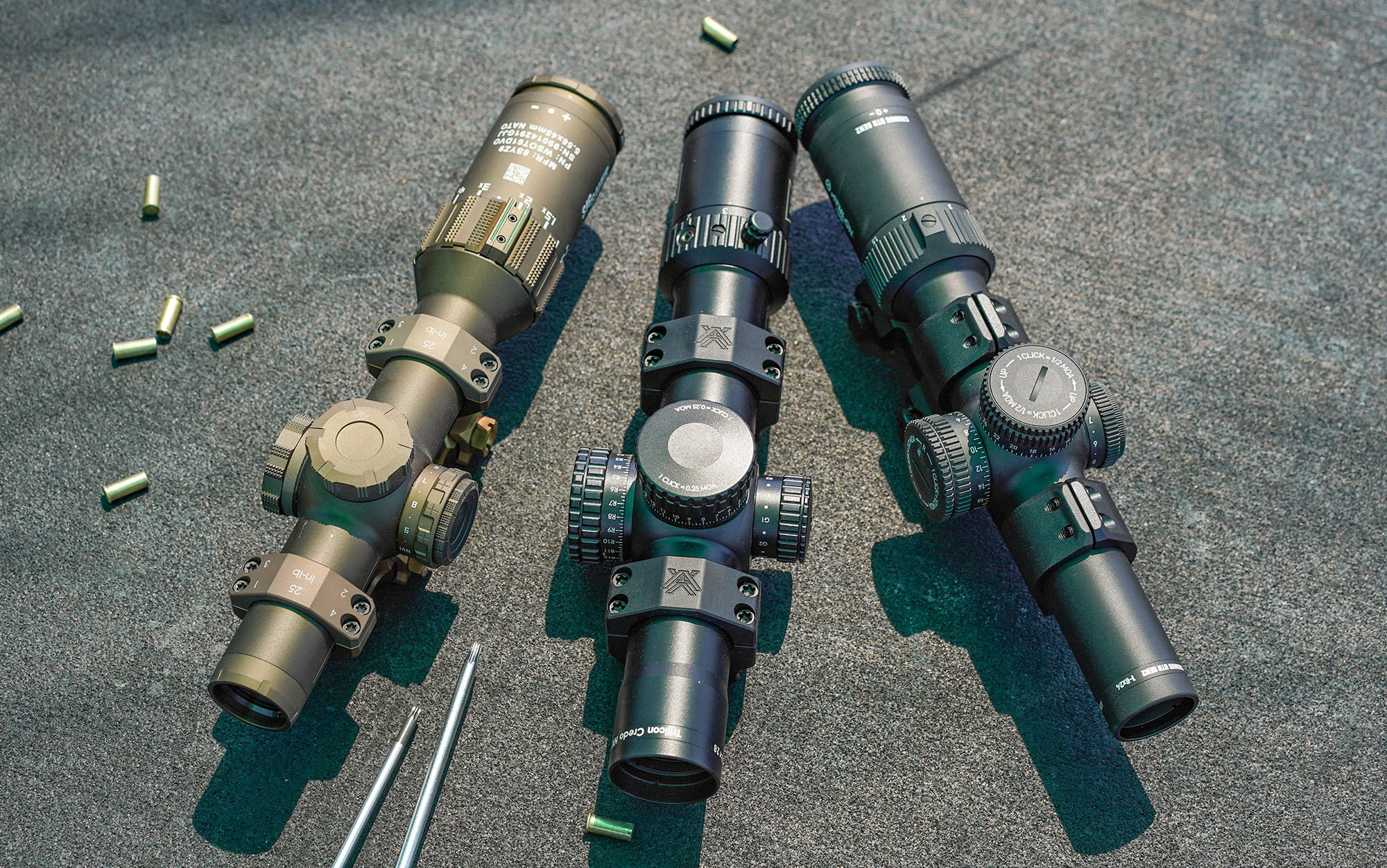
Most first-plane reticles, consequently, are at their best in mid-power magnifications, or at higher magnifications when engaging large-ish targets. Many manufacturers try to beat the vanishing-reticle phenomenon at lower powers by adding illumination that boosts reticle visibility.
The growing zoom ratio of scopes—that’s the multiplier of lowest and highest magnifications—is producing scopes that zoom from 4-power all the way to 24-power (that’s a 6X zoom ratio), or from 5- to 35-power (a 7X zoom ratio). In a first-plane configuration, manufacturers have to do a lot of work to make the reticle visible at the lowest end of the magnification range and not make it overly large at the highest end. Some perform this task better than others. Premium precision reticles such as the Zeiss ZF-MRi or the SKMR used by Kahles and other brands tend to work at most of the magnification range. But hash-style reticles in the first focal plane that don’t have an open center and have fairly bold stadia can obscure targets at higher magnifications.
Do all these attributes mean front-plane reticles are lousy for hunting? Not at all. Many hunters use them with great success especially in Western big-game hunting. But most hunters use them at modest magnification to not obscure an animal’s vital area.
Because it’s harder to manufacture a reticle that sits far forward in the main tube, assembly costs are higher, and first-plane scopes tend to cost more than their second-plane equivalents.
Read Next: Best Long Range Rifle Scopes
Second-Plane Reticle Breakdown
Pros
Now, let’s consider second-plane reticles. Because they’re located behind the erector assembly, reticles stay the same size, regardless of magnification. This is useful when paired with a simple crosshair and it can be effective when engaging smaller targets at far distances, since the reticle doesn’t cover much of the target.
Because the reticle is visible even at 1- or 2-power, the second-plane configuration is also optimized inside low-power variable scopes.
Many hunters prefer the second-plane arrangement because the fine reticle provides precise aiming points. Those who use “Kentucky windage,” or using bullet-drop references for hold-over compensation, often like the uncluttered design of most second-plane reticles.
Cons
But say you have those BDC hashes, or other aiming points. Their relationship to each other and to the target change as you change magnification. That means the holdover mark for a 400-yard shot results in a different bullet placement at 6-power compared with 11-power. For scopes that have caliber-specific BDC marks—many scopes have drops that correspond to 200, 300, 400, and even 500 yard hits with a 100-yard zero—the references only work at the highest magnification.
That might not be a problem for Western hunters who keep their scopes at max 12x or 16x. But what about an Eastern whitetail hunter, or a rimfire competition shooter, both of whom might engage targets at 50 yards in one situation and then at 200 yards in the next, and who consequently shoot at various magnifications? The math required to keep track of the variable drop differences, also called subtensions, can be significant, and in real-world field situations, debilitatingly slow.
Many mobile ballistic apps have formulas that provide the appropriate reticle subtensions—or the relationship between reticle references and your target—at various magnifications. But programming and then executing those holds in dynamic field conditions is hard to do.
In years of field testing BDC-style reticles, one constant has defined their use: they’re adequate for shots inside about 400 yards. But the farther out you stretch shots, and the more you rely on the bullet-drop references, the more imprecise they become. In part, that’s because they’re designed for speed, not precision. Their relationship to your specific load can be described as “close-enough.” That’s fine if you’re zeroed at 100 yards, and use the BDC hashes to hold over at 200 and 300 yards. But for shooters who demand precision for long-range shooting or hunting, close-enough isn’t adequate.
Final Thoughts on FFP vs SFP
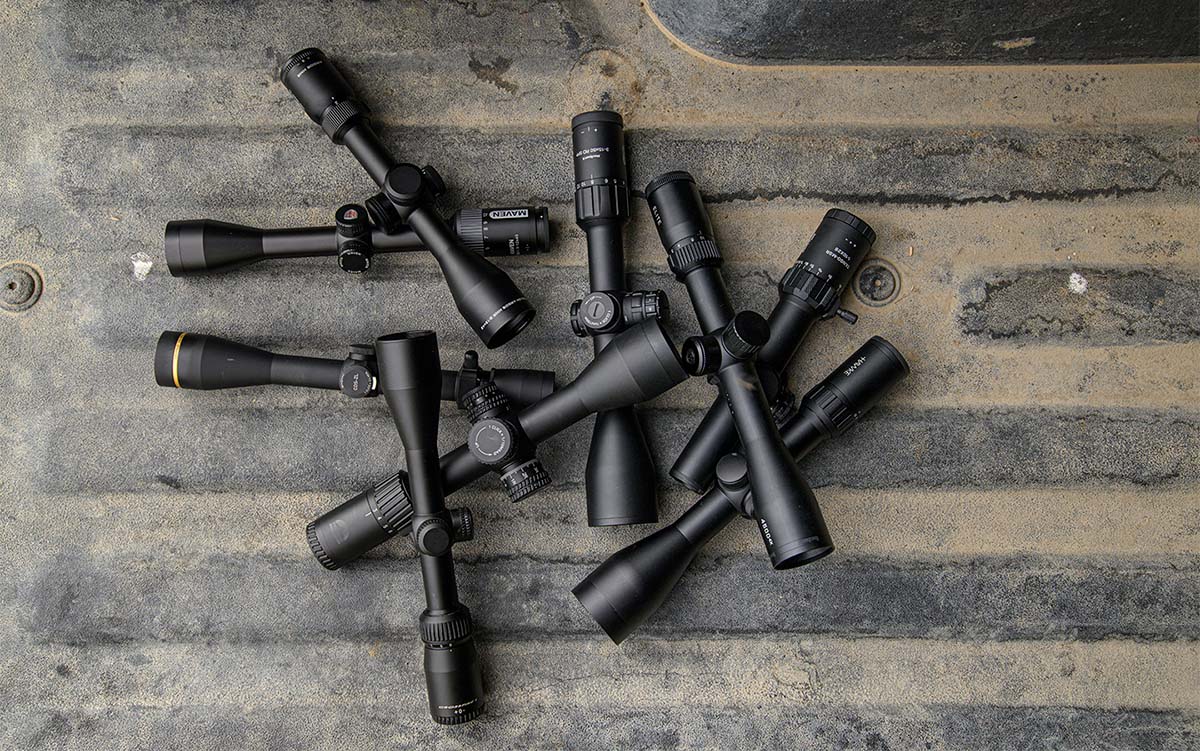
It’s fair to ask: Are second-plane scopes useless for precision target work? No, but because bullet-drop references are optimized for use at the highest magnification, these scopes have more limited utility. Also, most second-plane scopes have fewer reticle references, so precision aiming is more difficult.
Because the reticle is located near the rear of the scope tube, assembly costs for second-plane scopes are less than they are for front-plane reticles. Consequently, most second-plane scopes are less expensive than their first-plane equivalents.
Read Next: Best Rifle Scopes Under $500, Tested and Reviewed
Hopefully, this tutorial prepares you for that all-important third question at the gun counter. You’re on your own for the fourth: What reticle design do you prefer?

